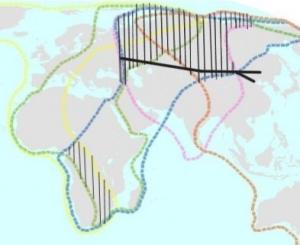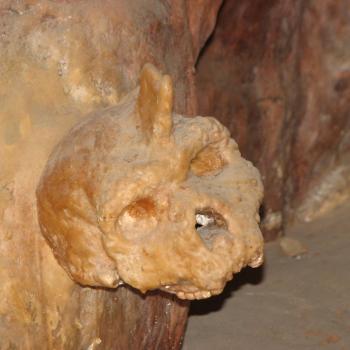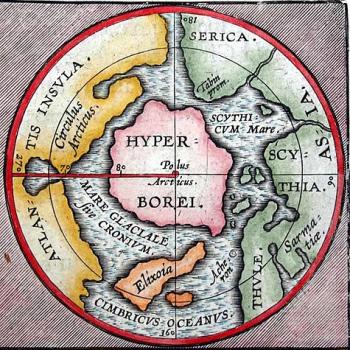The 25,000-mile Inca Royal Road tracks closely with bird migration routes on the Pacific Americas and Central Americas global flyways, opening the possibility that the road system may have been used in part for spiritual journeys intended to test the mettle of young elites — the high-mountain route reached an altitude of 16,400 feet.
Virtually every ancient culture perceived migratory birds as messengers and agents of the sun god because they followed the sun north and south each year and could get much closer to the sun than humans. The Inca had no idea the sun was 93.8 million miles away and assumed instead that it was in the general neighborhood. Traveling on a high-mountain road brought Inca royalty closer to the sun god and its divine avian helpers.



The general population counted on their leaders to ensure that migratory birds kept their mythic schedule of delivering seeds in spring and flying human souls to the heavens, often in the fall. Pharaohs, kings and tribal chiefs across cultures closely associated themselves with sacred birds, reassuring people that the seasonal migration and its benefits would continue.
The Inca Royal Road was vastly over-engineered in large part for religious purposes – a sacred road had to have certain features. A typical stretch of Inca road included modest canals running on the left side as part of an overly sophisticated drainage system. Considering the divinity of water across indigenous religions, the canals likely contributed to the sacredness of the road. They may also have been intended to attract sacred birds, such as the Andean condor.

Fresh seafood at altitude
The god-like Inca king was regarded as a child of the sun – in his rainbow-colored turban were two feathers of the coraquenque bird, possibly representing the heavenly parents of the first Incas, Manco Capac and Mama Ocllo, who came to Earth from the sun. The Inca used the road system as a tool of control in part by spreading their solar-based religion through a mixture of diplomacy and military power.
Long-distance relay runners could cover 150 miles a day, often carrying messages but also bringing fresh seafood for the royal family, who would dine at the luxurious accommodations that were built every 12 miles. Anyone who wanted to use the road needed royal permission.
Scholars agree there was a road system through the Andes Mountains for at least 3,000 years before the Inca, but they took it to another level. Rope suspension bridges were common, including one that stretched 150 feet over the Apurimac River near Cuzco. For even bigger and more perilous ravines they used a suspended basket to ferry people across.
But scholars have been puzzled by the fact that so much of the mountain route runs through unpopulated areas. Why did the Inca king and his llama caravan of singers, dancers and warriors use a high-altitude route through uninhabited territory? There was no one there to be impressed.
What were they doing up there?
Making the grade
A common cross-cultural phenomenon among elites was finding a way to put their children through tests of manhood as well as the spiritual education necessary to be a demi-god in the eyes of the people. Walking over a swaying rope bridge or dangling from a basket would have separated the wheat from the chaff.
It’s possible the high-altitude Inca Royal Road was intended to be a test of mettle and a spiritual journey when the royal family would commune with the sun god, a vitally important aspect of solar religions. In Egypt, the Temple at Edfu hosted the annual Coronation of the Sacred Falcon, a ritual intended to re-infuse the pharaoh with divine regenerative qualities.
The Inca Royal Road may have served a purpose similar to that described in Farid al-Din Attar’s 12th century epic, The Conference of the Birds, in which a hoopoe bird takes a flock of birds on a spiritual journey through seven valleys. On the way many lose faith, providing an opening for the hoopoe to tell stories that strengthen their spiritual backbone.

The Old North Trail
Another ancient trail runs 3,100 miles mostly along the Continental Divide from Canada to Mexico, ranging as high as 14,000 feet, tracking with bird migration routes on the Pacific Americas and Central Americas bird migration flyways (see maps).
The trail crosses through the original territory of 16 Native American tribes, who consider it sacred. For example, mountain peaks play a major role in the creation myth of the Blackfeet people. Scholars believe the trail was used for at least 10,000 years probably to trade items like obsidian and seashells, but dating an ancient road is nearly impossible. In New Mexico, the Zuni and Acoma built stone bridges and cairns on a segment of the trail that was used for at least 1,000 years.
In the July 1997 edition of Smithsonian Magazine, Peter Stark wrote that enough evidence exists to conclude that – like the Inca Royal Road – a second ancient trail also ran along the base of the mountains.
The King’s Highway
The King’s Highway once ran from Egypt across the Sinai Peninsula to Aqaba, then north through Jordan to Syria and the Euphrates River, again tracking closely with bird migration routes. The road system also included an ancient coastal route that became known to the Romans as Via Maris, or “way of the sea” in Latin. At least one east-west route joined the two roads.


The Qur’an describes a hoopoe bird reporting to King Solomon about the beautiful Queen of Sheba and her prosperous land in southwestern Arabia. The king then sent the hoopoe to the queen with an invitation, who responded by taking her entourage and a bounty of gifts to Solomon’s court.
Over the millennia the King’s Highway was owned and operated by whatever kingdom had the power to pull it off, in concert of course with the religious authorities. The road was protected for safe travel with rest areas offering water, food and shelter, but permission from the king, and payment, were required.
In the ancient world there wasn’t a whisker of space between church and state. The church wanted to spread the true word and the state just wanted to spread. Another name for the King’s Highway is the Isaiah 19 Road, based on the prophet’s biblical vision of the future.
Roads and religion
“And the Lord will make himself known to the Egyptians, and the Egyptians will know the Lord in that day and worship with sacrifice and offering … In that day there will be a highway from Egypt to Assyria, and Assyria will come into Egypt, and Egypt into Assyria, and the Egyptians will worship with the Assyrians. In that day Israel will be the third with Egypt and Assyria, a blessing in the midst of the earth …” (Isaiah 19:21-25)
The Book of Numbers says the Israelites used the King’s Highway during their flight from Egypt about 3,300 years ago, but had to take detours after being denied the right to pass by the King of Edom and the Amorite King Sihon.
Later the road became a pilgrimage route for Christians and Muslims, including a stop at Mount Nebo in Jordan where Moses was granted a view of the promised land before he died. Muslims also used an ancient pilgrimage road extending from Syria to Iraq and Mecca.
The Steppe Route
No one knows who established the east-west Steppe Route that once ran 6,200 miles from Eastern Europe to China, but scholars agree it was in use at least 4,000 years ago.

While the east-west route doesn’t track with specific bird migration routes, almost the entire road was located where three global bird flyways converge, an exceedingly rare phenomenon. The only other parts of the world where three flyway overlap are a north-south corridor of sub-Saharan Africa, Alaska, Central America and Patagonia.

Evidence suggests an elite class of horse-riding warriors dominated the Eurasian Steppe beginning about 3,000 years ago, protecting the trade of furs, weapons, musical instruments and precious stones.
Scholars believe the starting point of the Steppe Road was the Pontic-Caspian Steppe, located between the Black Sea and the Caspian Sea, where three global flyways converge. The steppe was home to an ancient culture between 5,300 and 4,600 years that buried some of their dead with animal remains and grave goods inside a sacred mound known as a kurgan. Bodies were laid on their back with legs bent at the knees and were covered in red ocher.
The Yamnaya or Ochre Grave people were semi-nomadic herders who also farmed the rich soils along rivers and likely spoke a Proto-Indo-European language that would later spread around the world. The oldest wheel in the world was found in the northern Pontic Steppe, where the Yamnaya likely used oxen to pull their four-wheeled wagons. All domesticated horses are descended from horses originally tamed on the Pontic-Caspian Steppe.

The Yamnaya, Scythians and Celts
Geneticists believe the Yamnaya were unusually tall for the time period, had mostly brown eyes and brown hair with light to olive skin, at least until a more northern population brought lighter hair and blue eyes to the equation. Scholars believe metallurgists and other craftsmen held important positions in Yamnaya society because a profusion of metal objects and other artwork were sometimes buried with the dead. The semi-divine blacksmith was also a feature of Celtic culture.
The mobile Yamnaya were close genetic relatives with cultures far to the east in the Altai region of southern Siberia, an area located along the Steppe Route. A 2017 study concluded that the Yamnaya were the ancestors of the Scythians, who later dominated the entire Eurasian Steppe.
A burial ground for Scythian elites dating back 2,300 years was found on the Steppe Route along the Kara-Kaba River in Kazakhstan near the borders with Russia, Mongolia, and China. A Venus figurine was found on the Upper Angara River near Irkutsk.
Geneticists believe the Yamnaya originally came to the Pontic Caspian Steppe from modern-day Turkey and the Middle East, where Israel boasts by far the highest number of migratory birds of any country in the world – 500 million.
(Ben H. Gagnon is an award-winning journalist and author of Church of Birds: an eco-history of myth and religion, released April 1, 2023 by John Hunt Publishing. Order here or at other booksellers. More information can be found at this website, which links to a pair of YouTube videos written by the author and produced by JHP.)
















